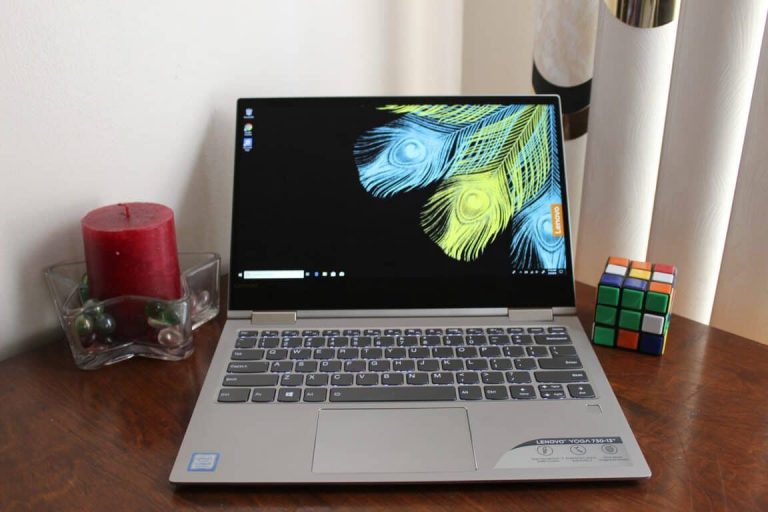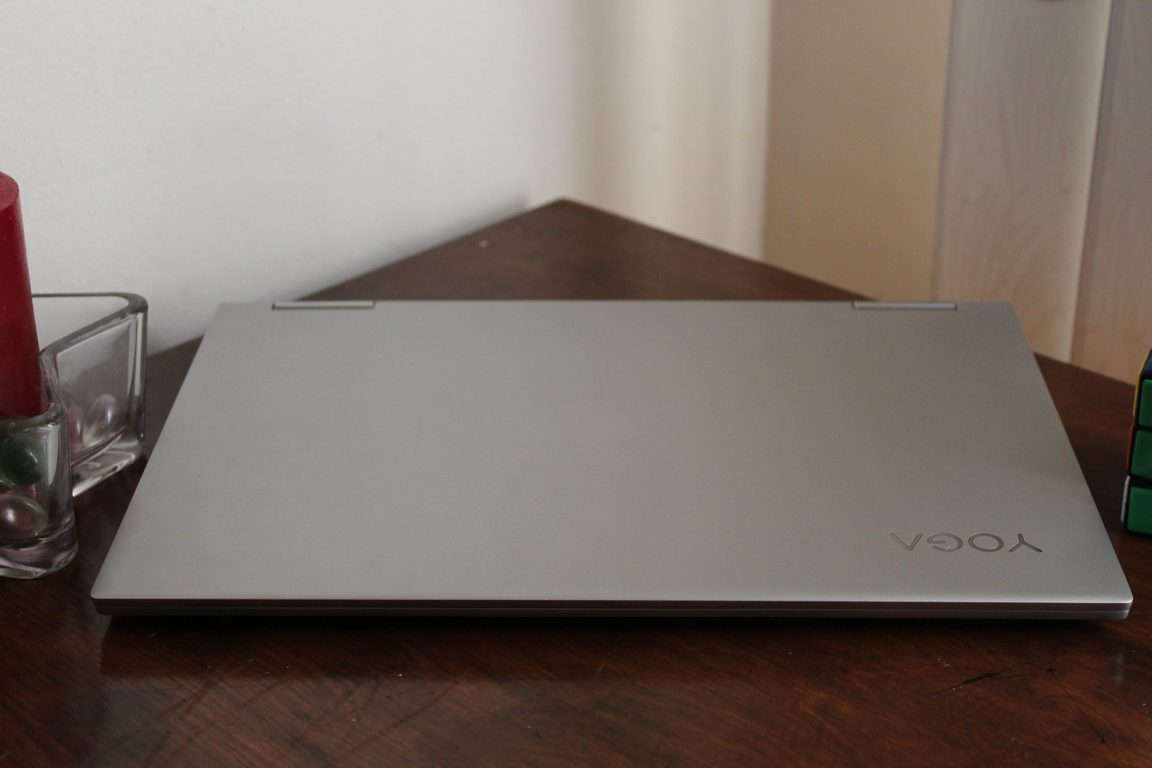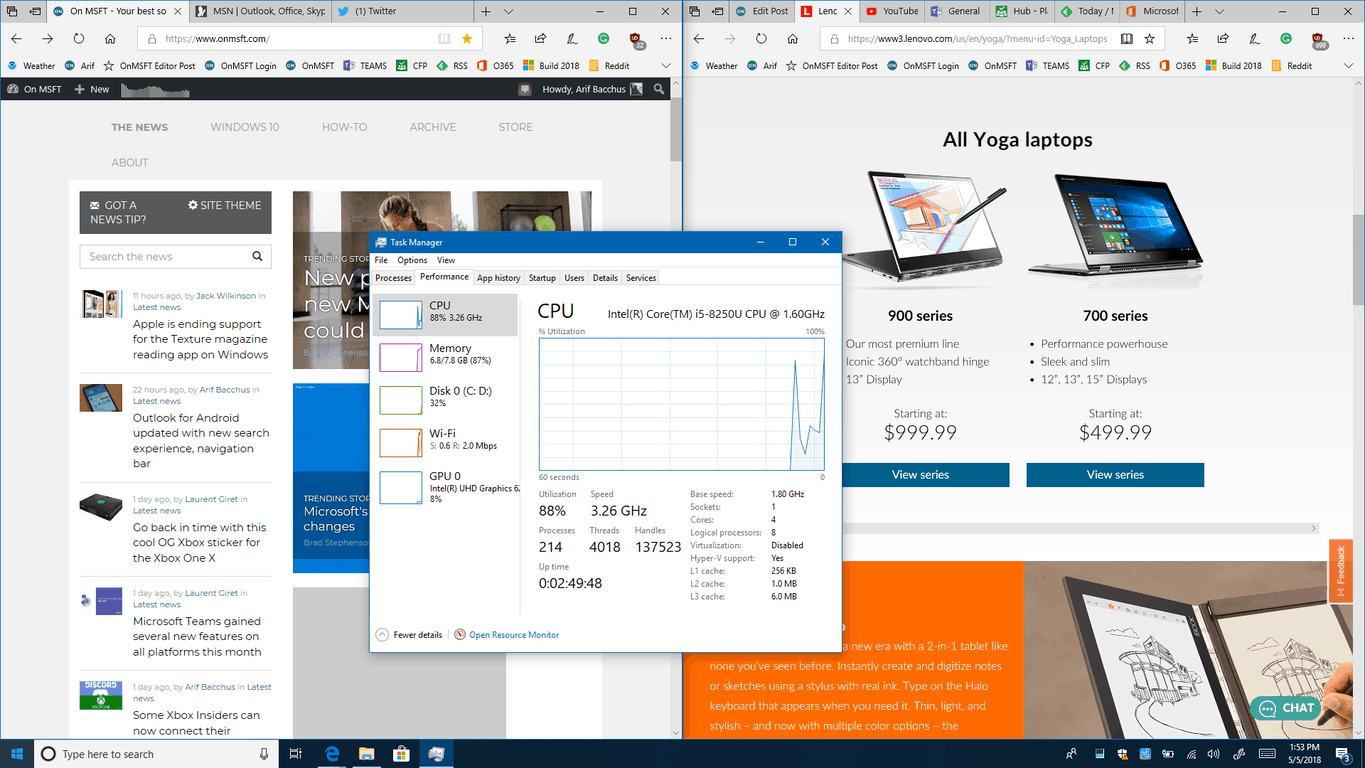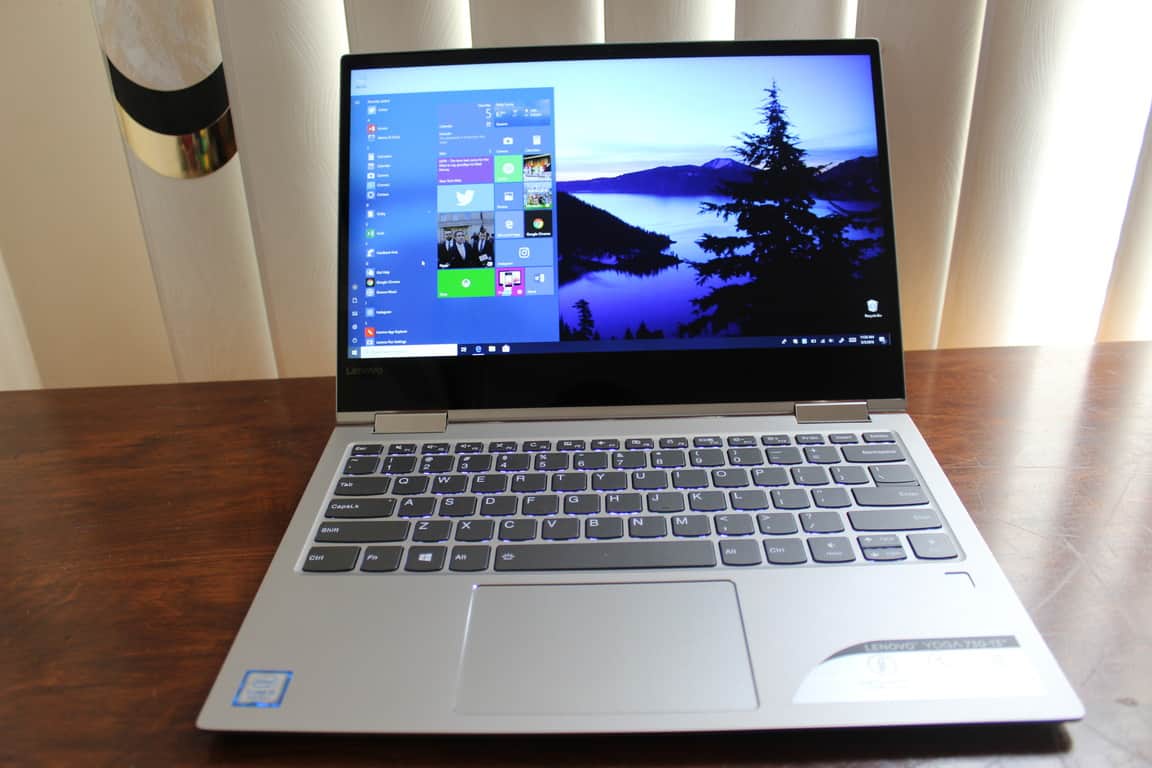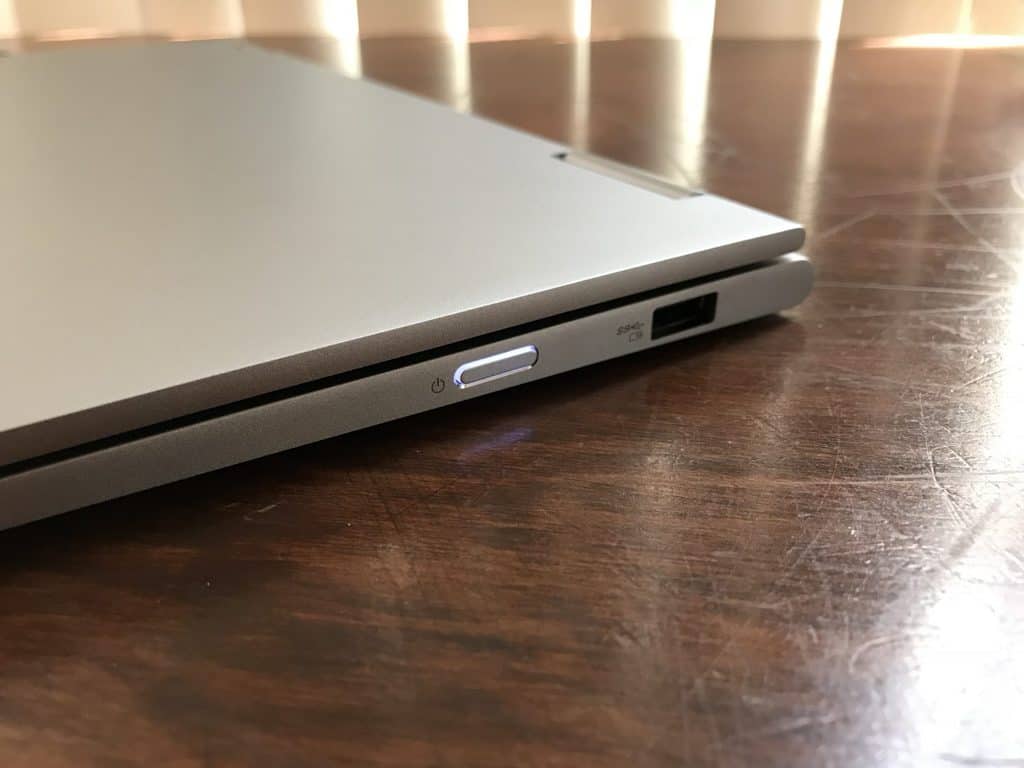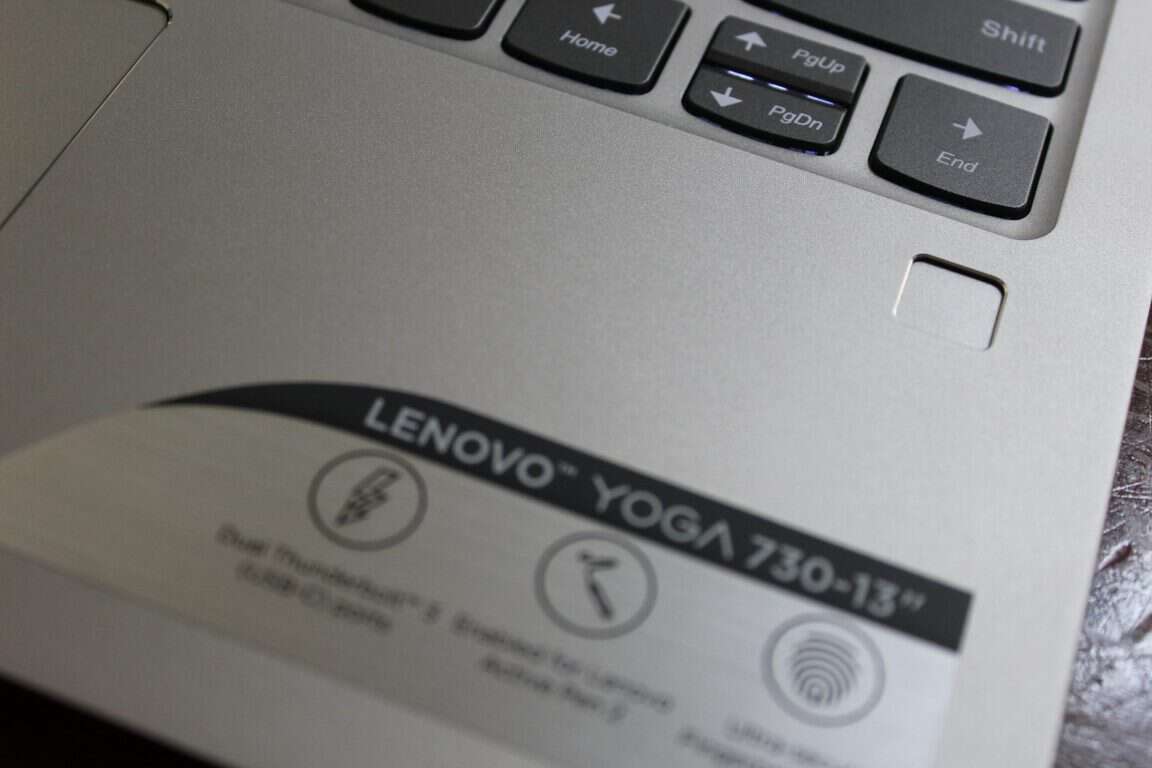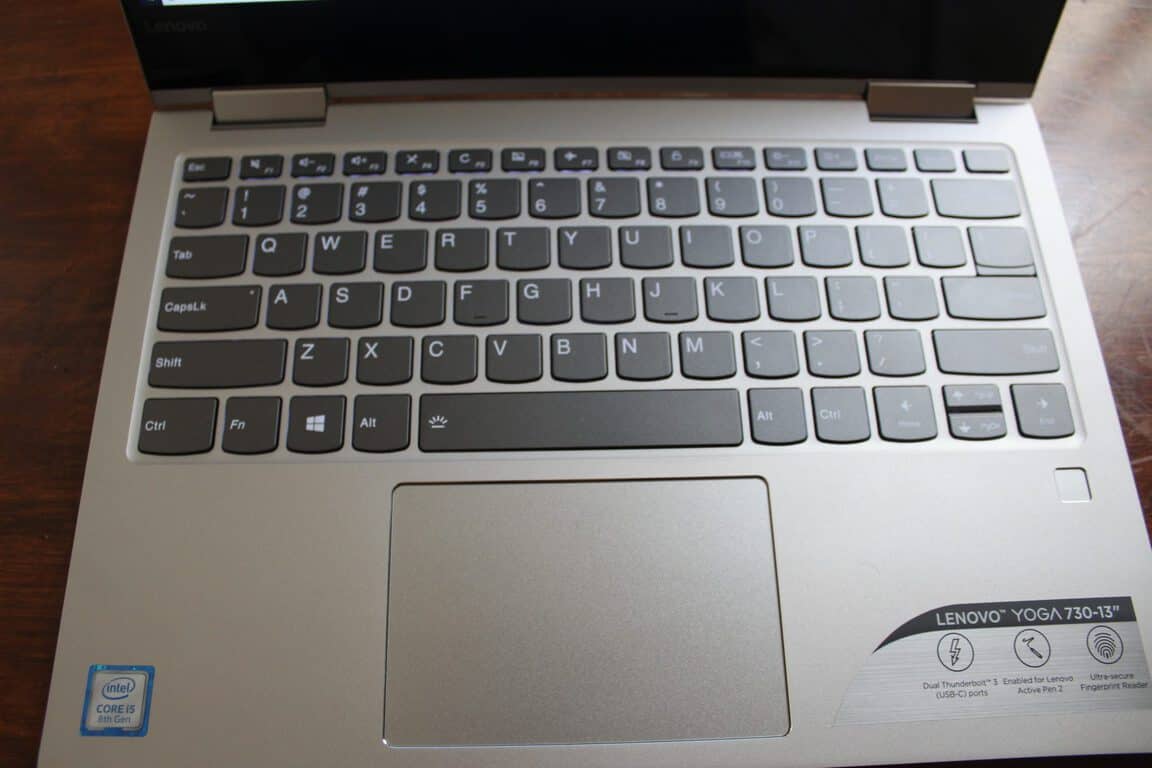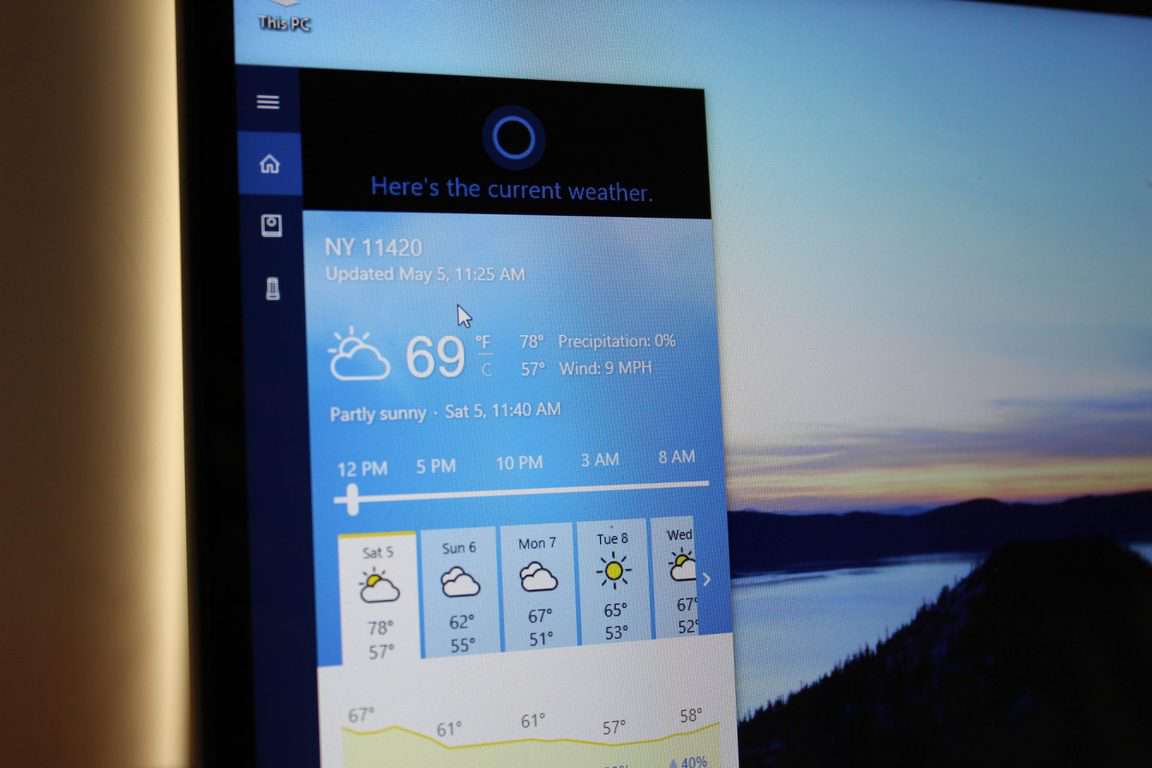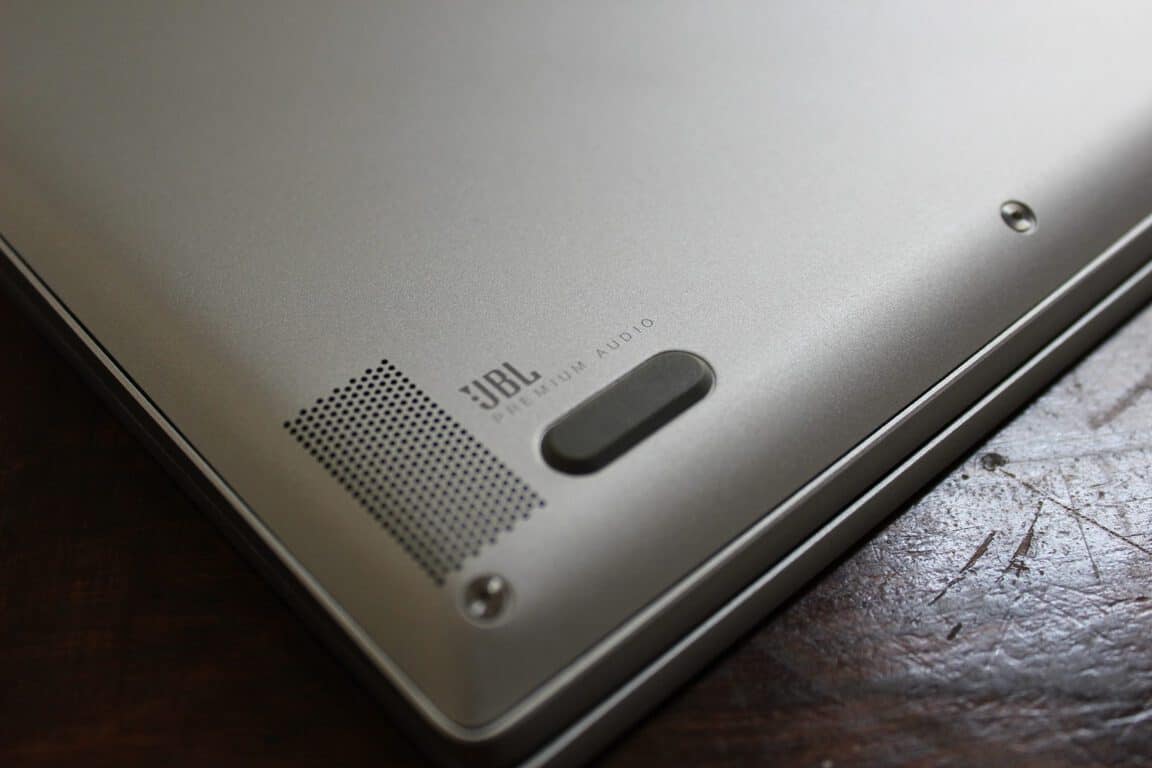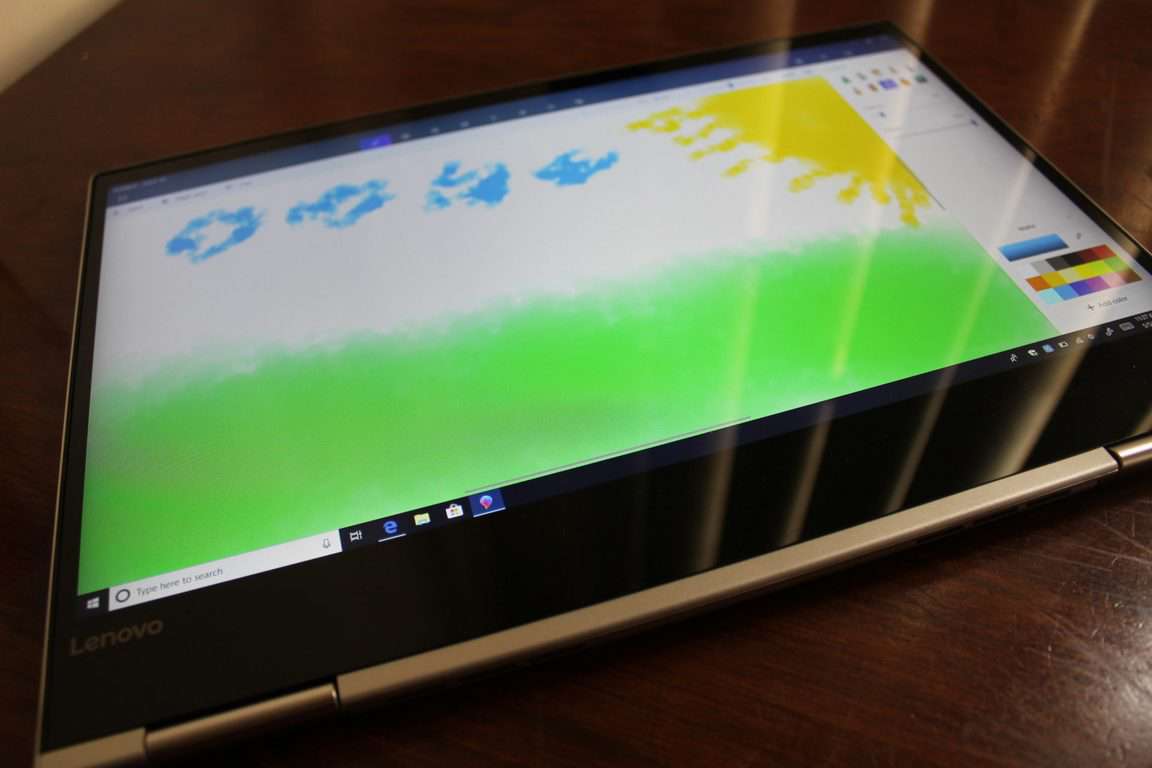Lenovo’s Yoga lineup has long dazzled consumers with premium-looking build and design, but for many, the top of the line Yoga devices are a bit too expensive. Fortunately, at WMC 2018, Lenovo kept things under the $1,000 price range and introduced the Yoga 730, a Windows 2-in-1 that is light on the wallet ($849), but heavy on premium features. I’ve been lucky enough to spend some time with the device this past three weeks, and I’ve found that it packs big power in a small put premium package.
TL;DR
- No sacrifices for the price thanks to an all-aluminum, compact, thin and light design
- Performance on par with the $1000 Yoga 920 thanks to Intel’s 8th generation quad-core chips which deliver better battery life and overall system performance
- A bright and vivid display that’s perfect for web browsing and multi-media consumption
- Hollow feeling keyboard and trackpad that gets too loud
- Thunderbolt 3 USB C ports and USB 3.0 keeps things modern and efficient
- Peace of mind and security thanks to Windows Hello fingerprint login
- Far-field microphones make talking to Cortana easy, and JBL Audio makes listening to music fun
- All-day battery life and quick charge tech gives extra peace of mind
- Pen not included, keeps the price down, but might be a deal breaker for some
Specs
The unit which sent to us is powered by Intel’s 8th Generation Core i5 8250U processor clocked at 1.6 GHz. It also comes with a total of 8 GB of RAM, with a 256GB NVMe Samsung SSD, and Windows 10 Home. You can see the other notable specs which we will touch on throughout this review by checking below.
- Graphics: Intel HD
- DIsplay: 13.3 inch IPS Anti-Glare Multi-Touch at (1920 x 1080) resolution
- Battery: 48- Watt-Hour, with 15 min quick charge for 2 hrs battery life
- WLAN & Bluetooth: Qualcomm Atheros QCA61x4 and Bluetooth 4.1
- Camera: 720p HD Fixed-Focus
- Audio: JBL Speakers with Dolby Atmos
- DImensions: 11.53 x 8.01 x 0.62
- Weight: Starting at 2.47 lbs
- Material: Aluminum
- Ports: 2 x thunderbolt USB Type-C 1 x USB Type-A (USB 3.0) Headphone/Mic Combo FingerPrint Reader with Windows Hello
Premium design
We’ve had excellent things to say about Lenovo’s fantastic design in the past, and the Yoga 730 is no different. Lenovo keeps the Yoga 730 premium and perfect, sticking to an elegant all-aluminum design that is just slightly thinner and refined compared to last year’s Yoga 720. There are no sacrifices for the mid-range price, and the device feels very top of the line coming with no plastic whatsoever.
In fact, coming in at just 2.47 pounds, the Yoga 730 is so slim and light that I was able to travel with it without even realizing it was there. The device was my daily driver for three weeks just because it was so easy to move around with during the day. It fits nicely anywhere, especially on a desk, where it both looks good and keeps a small footprint.
Great as all that is, Lenovo does not include a “lip” on the front of the device to help you grip it open. This makes the device hard to open up into clamshell mode, and I found myself having to use two hands to get the thing open on the fly. One small problem with an otherwise perfect design.
Premium power and performance
For a device in the mid-range price range (and with integrated graphics,) the Yoga 730 still packs plenty of power. It’s on par with the $1000 Yoga 920 thanks to Intel’s 8th generation quad-core chips which deliver better both battery life and premium performance. The choice of chip is also a change from last year’s Yoga 720 which used dual-core processors.
That said, the Yoga 730 easily handled my daily workflow of working in Edge with 10+ tabs open, including YouTube, Microsoft Teams, and WordPress. Most people won’t push the machine this far, but it’s an easy proof of how capable the Yoga 730 truly is. You can see the performance scoring compared to other Lenovo devices below. The device is pretty close to the top of the line Yoga 920, meaning you’re getting good value for the money.
Lenovo Yoga 730 (8th Gen Intel Chip, Intel UHD Graphics 620)
- 4085 Single-Core Score/ 11006 Multi-Core Score
- 22568 OpenCL Score
Lenovo Yoga 920 (8th Gen Intel Chip, Intel UHD Graphics 620)
- 4847 Single-Core Score/14885 Multi-Core Score
- 22591 Open CL Score
ThinkPad X1 Carbon 6th Gen (8th Gen Intel Chip Intel UHD Graphics 620)
- 4866 Single-Core Score/14253 Multi-Core Score
- 22971 Open-CL Score
For my daily usage, the 8th gen Intel chips meant that multi-tasking and web browsing was comfortable, with no freezing, or slowdowns. The only problem was with the fans whenever the machine was under heavy loads. The all-aluminum chassis also gets warm, especially when you’re watching videos or using the device in tablet or stand mode, but it’s nothing too unbearable.
Premium display
The 13.3-inch display on the Yoga 730 falls on the same level as those on devices from other manufacturers. Technical details aside, the screen is very bright and makes things very vivid, crisp, and bright. I used the Yoga 730 tent mode to watch episodes of NBC’s Chicago Fire, and it felt like I was watching on my TV. The smoke from one scene with a fire stuck right out, proving that the display makes for a premium multimedia experience.
For web browsing, the large bottom bezel and 16:9 aspect ratio made the Yoga 730 display feel a bit cramped. Coming from using a Surface Pro (which has a 3:2 ratio) it initially was a bit hard to focus in on text and other elements in my web browser. The bottom bezel also made it feel like I was losing out on screen real estate, but a quick trip to the system settings and adjusting scaling to 100% made the UI smaller and fit more things on the screen.
But that’s not to say that the display is terrible. The 13.3-inch screen does get the job done, and the high level of brightness gives the Yoga 730 it very premium feel. Plus, Lenovo also trimmed down the side bezels a bit, giving the display an edge to edge feel. These slimmer bezels means you do pick up some space on the sides of the screen, which is always good for multitasking.
Ports
When it comes to ports and security, Lenovo is always forward thinking. The Yoga 730 comes with Dual USB Thunderbolt 3 ports, as well as standard USB 3.0. The set up means you can connect thunderbolt monitors at the same time to the device for when you want to step up your multitasking.
You can find the two USB C Thunderbolt 3 ports on the right side of the device, which is where the headphone jack and reset button are also located. Either one of these Thunderbolt ports can be used to charge the device, which is pretty cool since you can purchase a mobile power bank and charge the Yoga 730 on the fly.
On the left side, you can find the USB 3.0 Port and the power button. It was nice to see classic USB 3 on this device, as it removed the need for me to buy a dongle to connect my external peripherals. At the end of the day, I do wish there was an SD Card reader so I could expand space on the device. But I guess Lenovo wanted to keep things slim, and it wouldn’t have fit right in. Maybe in the next gen.
Security
Most Lenovo devices now support Windows Hello, and the Yoga 730 is another testament to this. On the bottom right side of the keyboard on the Yoga is a fingerprint reader, which is in an ideal spot. The reader is quick and accurate and makes logins very simple. I never once had any issues with it, even with sweaty fingers. Passwords are so in the past!
Keyboard and Trackpad
Lenovo has always been great with keyboards and trackpads, but the one on the Yoga 730 is a bit of a letdown. Though I was able to type at 100 words per minute, the keys felt a bit too hard and squeaky on my fingers. They also made loud noises, causing people in the library to give me strange stares when I was typing up a storm. I found this all rather strange, considering that the keyboard keeps to the same island-style layout seen on the Yoga 920.
The Trackpad is also not the best, as it feels pretty hollow. It can get pretty loud, just like the keyboard, but it is pretty spacious at 4.1 x 2.7-inches. This makes using Windows 10’s trackpad gestures pretty comfortable, which was perfect for me when I was too lazy to move my hands to the touchscreen to pinch to zoom or scroll web pages.
Far-field Microphones and Audio
A prominent feature on the Yoga 730 that’s new for 2018 is Far Field Microphones. I’ve touched on this feature in my review of the X1 Carbon 6th Gen, and it’s the same for this device. To sum up– the far-field microphones allow you to shout at Cortana from across the room (from up to 4 meters away) and ask all kinds of questions without being directly near your device. I found the feature useful for when I have to ask about the weather, or how my Mets are doing.
Lenovo also says that the far field Microphones will also work with Amazon Alexa, but the Alexa integration was not included on board my review unit, and I couldn’t try it out for myself. The integration is coming “in the near future” and we’re still looking forward to trying it out later this year.
Anyway, the JBL speakers on the Yoga 730 are among the best you can find on a 2-in-1. They might be on the bottom of the device, but the sound is still loud and “rocking.” When I listened to ACDC’s Back in Black the song echoed throughout the room and the bass and guitar sounded exceptionally clear. I did, however, adjust the Dobly Atmos settings, which makes for a more custom and premium listening experience.
Active Pen 2 sold separately
Since this is a 2-in 1, you can use it in four modes— Laptop, Tent, Tablet, and Stand. I liked using the Yoga 730 in tablet mode to read books and do some scribbling in Paint 3D, but I was a bit sad to see the pen was not included by default. You’ll need to buy the pen separately from Lenovo, which kicks down the initial pricing of the device and keeps it mid-range.
Battery life—- enough to get through the day
For all the under the hood power in the device, the Yoga 730 still packs good battery life. My writing shifts usually last from 8:30 AM- 2:30 PM here at OnMSFT, and the Yoga 730 was able to last me throughout the day on the “better performance” option on the Windows 10 battery slider. It was quite surprising to see the battery go this long, and I never really worried since the Rapid Charge support meant I could get 2 hours of battery life with just a 15-minute charge.
Conclusion
At the end of the day, the Yoga 730 offers up fancy design and good value for the price. You’re getting performance with Intel’s 8th gen processor, an excellent display, all-day battery life, and the versatility of a 2-in-1 for less than $900. You can learn more about the Yoga 730 by checking Lenovo’s website here or buy the exact model we reviewed from BestBuy for $849 right now.

